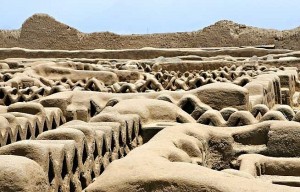 World Heritage sites are continuously exposed to natural and man-made disasters which threaten their integrity and may compromise their values. The loss or deterioration of these outstanding properties would negatively impact local and national communities, both for their cultural importance as a source of information on the past and a symbol of identity, and for their socio-economic value.
World Heritage sites are continuously exposed to natural and man-made disasters which threaten their integrity and may compromise their values. The loss or deterioration of these outstanding properties would negatively impact local and national communities, both for their cultural importance as a source of information on the past and a symbol of identity, and for their socio-economic value.
For example, many sites have been found to be sites at risk and it would surprise anybody to see what sites are on the list. Venice was built on 118 islands was named a UNESCO World Heritage site in 1987. However, the whole city has been listed as one of the UNESCO sites at risk because of rising sea levels due to global warming. Another city and UNESCO sit that will be threatened by rising sea levels is the French port city of Bordeaux, Port de la lune, has a trading and commerce history spanning over 1,000 years. Croatia’s Dubrovnik is a well-preserved medieval walled city situated on the Dalmatian coast. The city became a UNESCO World Heritage site in 1979, but it is believed to be at risk due to rising water levels.
UNESCO has created a strategy focused on preservation of many sites. The Strategy identifies five objectives and related actions. They are structured around the five main priorities for action defined by the Hyogo Framework for Action, the main UN-wide policy on the subject of Disaster Reduction, and are also in line with Article 5 of the World heritage Convention as well as the Strategic Objectives established through the Budapest Declaration. The five key objectives are:
- Strengthen support within relevant global, regional, national and local institutions for reducing risks at World Heritage properties;
- Use knowledge, innovation and education to build a culture of disaster prevention at World Heritage properties;
- Identify, assess and monitor disaster risks at World Heritage properties;
- Reduce underlying risk factors at World Heritage properties;
- Strengthen disaster preparedness at World Heritage properties for effective response at all levels.
Even though these declarations were made several years ago, it is clear that we still need a global strategy that addresses environmental causes and better ways of management and conservation.
Pollution and dumping of toxic chemicals or environmental pollutants are also another cause of damage to heritage sites. Two recent major reports Australian news outlets into health and management of the Great Barrier Reef show that parts of the World Heritage site are still under pressure and the central and southern areas are deteriorating (according to Australia ABC news).
It has also been reported that the UNESCO is concerned about the Abbot Point Port expansion and the plan to dump three million cubic meters of dredge spoil within the marine park.
Better strategies and guidelines as well as advocacies are needed in order to protect more UNESCO World Heritage Member sites as it looks like just inscribing them does not protect them from neglect, damage and deterioration.















